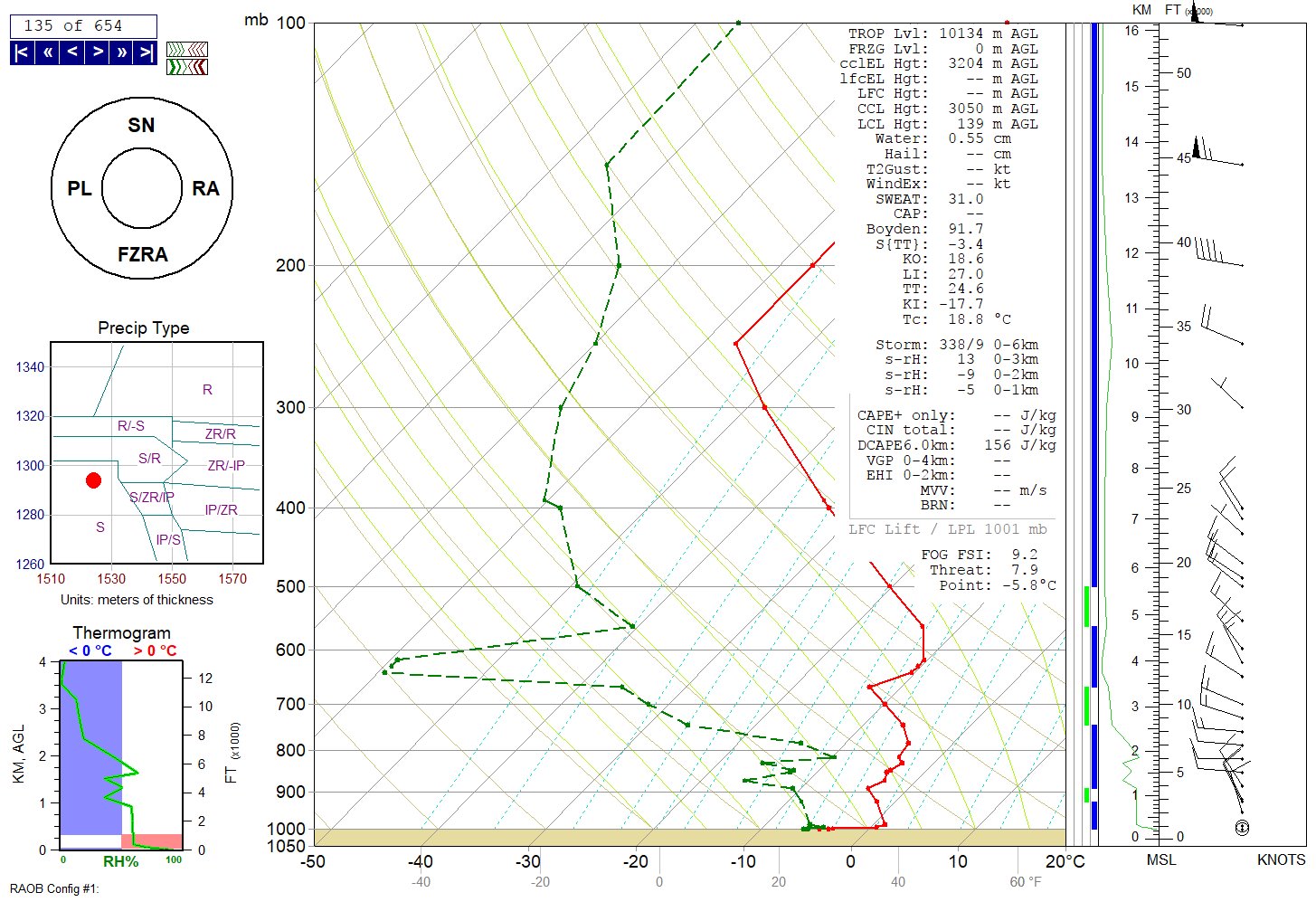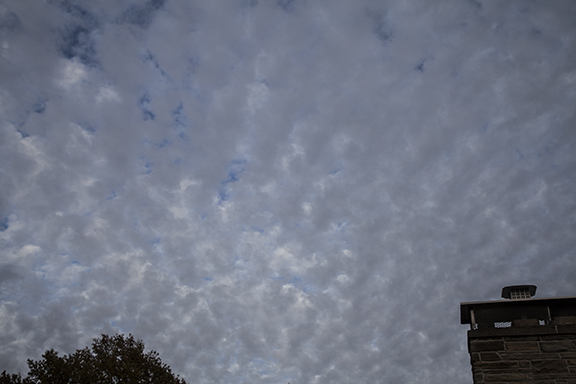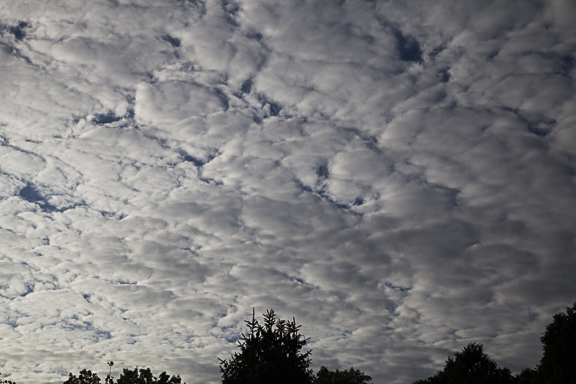November Prairie Sunset
/Life on the prairie includes seeing for miles and miles and miles. Sunsets can be spectacular with vivid colors and a variety of cloud shapes. The three images in this post were taken near sunset at Fort Dodge, Iowa, 11-16-2017. The sky was dominated by altocumulus clouds. These images show a few different forms of altocumulus that were in the sky at the same time.
Notice the ripples (waves) traveling in different directions at different altitudes. The waves creating these clouds are gravity waves - waves generated at the interface between two media. Watch the wave action on a lake and you get an idea of how these waves form in the atmosphere. They occur along the interface between layers of different air density. Like a lake, which has considerably different density between the water and the air, the air motion across the lake creates waves. The same thing is happening here only the waves are occurring between layers of air.
The altocumulus are prominent in this photo with the most distinctive wave action near the center. Temperatures were in the 40s and the sky definitely has the chilling look and feel of mid-November.
The leafless trees and the setting Sun set up a picturesque November sky. Red light bathed the altocumulus cloud base with red light. The coloration brings out the three dimensional structure of the cloud formation. Notice two large birds cruising below the clouds and above the trees. The trees have lost their leaves in preparation for winter.































